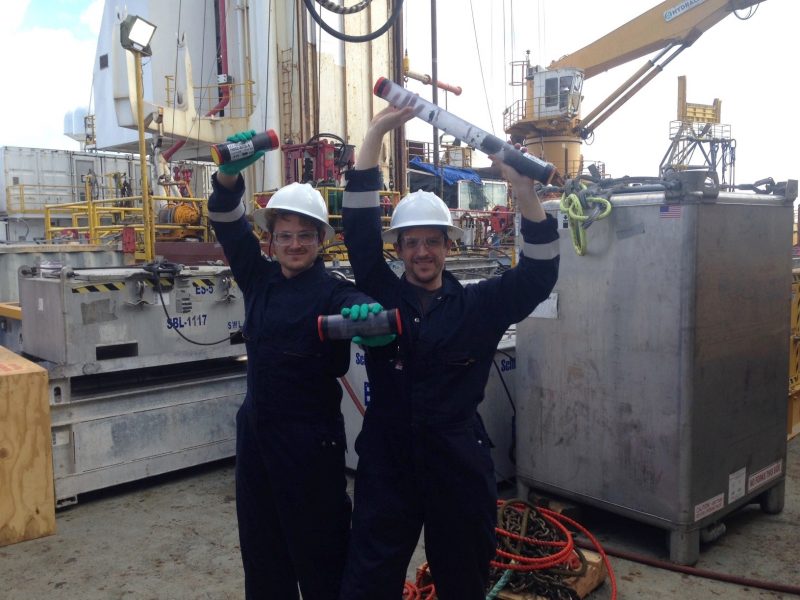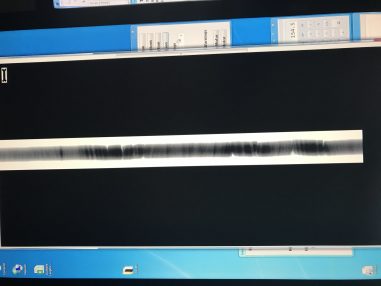Bust to Boom
May 22, 2017

This is the sixth post in a series on the Jackson School-led mission to drill for samples of methane hydrate from under the Gulf of Mexico for scientific study. Read the fifth post here.
I left the Helix Q4000 last Tuesday after more than a week aboard. The science team, to put it mildly, was in a bit of a bad spot at that moment, dealing with a coring tool that wasn’t working properly.
Lead scientist Peter Flemings explained the situation in a bit starker terms.

“I spent the first 10 days out here in a state of complete and utter failure,” he said. “Literally we recovered not one inch of core. I was within 24 hours of abandoning the expedition and cutting our losses. Each day, we would update our budget and would find us $400,000 further in the hole with nothing to show for it. … Meanwhile, I was explaining to my son that this was a great example of the fact that it is ‘ok’ to fail because it means you are trying challenging things. He wasn’t convinced.”
Looks like I was the Jonah of the crew because since I have left the team has had nothing but success. Of course the fact that the team spent 24 hours tearing the tool apart and making multiple small changes – or “McGivering” as Flemings described it – may have had something to do with it.
“We must have done something right because after that change, we’ve had 100 percent core recovery,” Flemings said. “Our new problem is that we are acquiring too much pressurized core.”
The Department of Energy-funded project, led by Flemings and The University of Texas at Austin Jackson School of Geosciences, is first order research into a little understood substance with tremendous potential as a future energy source.
Methane hydrate is essentially frozen methane that is created under low temperatures and high pressure under the ocean and arctic permafrost. However, because it’s found at such high pressures, it’s difficult to study. Under normal pressure, the methane expands and bubbled away into the atmosphere. The project currently underway is a test the technology and methods being pioneered to bring up samples of methane hydrate under the same pressure and temperature it is found under the Gulf floor so scientists can study the hydrate in its natural state.

Now the pressure cores will be transported to the University of Texas at Austin and stored at the newly built UT Pressure Core Center in the basement of the Jackson School, where scientists can begin to unravel the true nature of methane hydrate. Pressure cores will also be sent to the U.S. Geological Survey (USGS) in Woods Hole. Depressurized cores will be shipped to Ohio State University, University of Washington, Oregon State University, ExxonMobil, USGS Woods Hole.
The fun is just beginning.
Anton Caputo, Jackson School Communications Director
